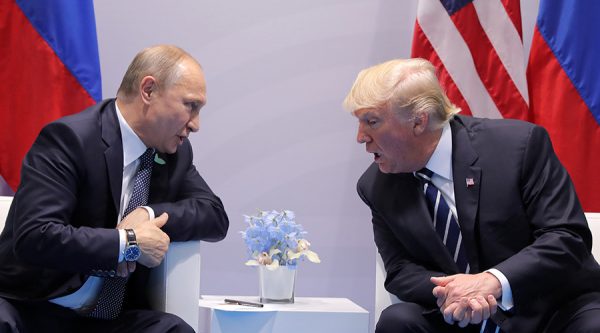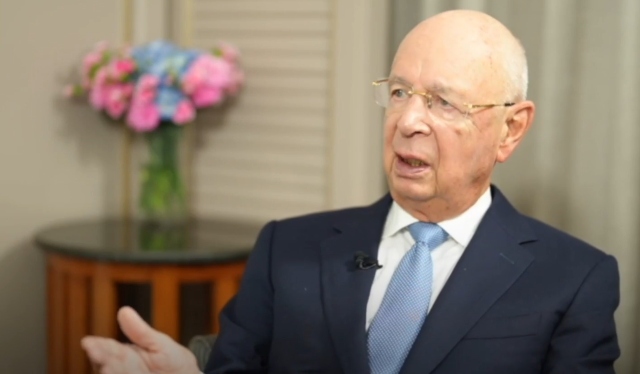 Parler
Parler Gab
Gab
- China imposed export controls on seven critical rare earth elements (HREEs), retaliating against U.S. tariffs and disrupting global supply chains. These elements are essential for defense systems, EVs and green tech, heightening fears over U.S. dependency.
- The Pentagon warns that restricted access to rare earths like dysprosium and terbium—crucial for F-35 jets, missile systems and EV batteries—could delay U.S. defense production and cede technological leadership to China.
- China refines 85% of the world’s rare earths, leveraging decades of state-backed expertise. Previous actions (e.g., the 2010 Japan embargo) showcase its willingness to weaponize supply chains, forcing competitors to adapt or face disruption.
- While the U.S. mines rare earths (e.g., Mountain Pass), it lacks refining capacity for HREEs. Biden’s R&D investments (e.g., DARPA’s bio-separation project) and Trump’s mining push remain insufficient to counter China’s dominance quickly.
- China’s control over rare earths threatens to erode U.S. military and tech superiority. Without rapid, coordinated action, America risks long-term dependence as Beijing tightens its grip.
A strategic mineral crisis escalates
At the heart of the conflict are seven “heavy” rare earth elements (HREEs)—scandium, yttrium, samarium, gadolinium, terbium, dysprosium and lutetium. These metals are indispensable for high-temperature magnets used in fighter jets like the F-35, missile guidance systems and electric vehicle batteries. Beijing’s restrictions, while not a full embargo, require U.S. companies to secure new export licenses, a process Chinese officials have already slowed to a crawl. Meanwhile, blacklists targeting American firms with ties to Taiwan further tighten the screws, compounding disruptions in a supply chain already tilted heavily toward China. The crisis underscores China’s unparalleled control. While holding 30% of global rare earth reserves, Beijing refines 85% of the world’s supply, having perfected complex separation processes the U.S. abandoned decades ago. “The Middle East has oil. China has rare earths,” former leader Deng Xiaoping proclaimed in 1992, laying the groundwork for an industrial strategy that transformed Beijing into a near-monopoly on these critical materials.Historical precedent and Deng’s vision fuel concerns
China has wielded its resource dominance before. In 2010, Beijing cut off rare earth exports to Japan, then a top consumer, after a fishermen’s arrest near disputed islands. Tokyo was forced to release the captain while scrambling to rebuild its supply chains through diversification, stockpiling and efficiency measures—a playbook the U.S. has yet to fully replicate. Deng’s vision, rooted in his emphasis on resource leverage, guided China to vertically integrate its rare earth sector. While U.S. firms exited due to environmental costs and regulatory hurdles, Chinese engineers amassed patents, innovations and processing expertise. By 2022, China’s market share had dipped slightly, but its export controls and state-backed refineries kept rivals at bay. “All of them behave the same way… making separation difficult,” Dr. Isabel Barton, a rare earths expert at the University of Arizona, told yourNEWS Media, explaining why Western firms have struggled to revive domestic refining at scale.Defense and tech sectors brace for impact
The Pentagon faces immediate challenges. Heavy rare earths like dysprosium, crucial for heat-resistant magnets in F-35 engines and AI-powered drones, are now under Beijing’s thumb. Defense officials report growing delays in acquiring finished magnets, with U.S. firms reliant on Chinese shipments for 80% of their needs. “Restricted access could ensure China wins the race to deploy a sixth-generation fighter jet, overtaking U.S. military dominance,” warned William Matthews, a senior research fellow at the Asia-Pacific Programme, citing Chinese test flights of the J-36 and J-50 prototypes. The ripple effects extend beyond aviation. U.S. automakers, racing to meet EV targets, may see battery production stymied by shortages of terbium and neodymium. Meanwhile, Taiwan Semiconductor Manufacturing Company, a key chipmaker for U.S. defense contractors, relies on rare earths for precision lasers and radar guidance systems. Beijing’s dual squeeze on minerals and semiconductor tools risks paralyzing advanced manufacturing ecosystems.U.S. supply chain efforts lag as clock ticks
Washington’s response has been slow and fraught. While Trump pushed a “mine-to-magnet” initiative, his “America First” push aimed to boost domestic mining at California’s Mountain Pass—a major resource hub producing 45,000 metric tons of rare earth oxides last year, versus China’s 270,000. Yet U.S. firms have yet to master HREE refining, leaving them dependent on foreign partners. Texas-based firms are building new facilities, but Beijing’s 2024 “state resource” classification bans the export of rare earth processing technology, forcing Western companies to innovate from scratch. The Biden administration poured billions into R&D, including DARPA’s EMBER project, which seeks to use microbes for eco-friendly rare earth separation. Principal Investigator Marina Kalyuzhnaya called the research “exciting but years from scaling,” a timeline critics say is too slow for an arms race.A race against time to break dependence
The stakes could not be higher. From fighter jets to AI, China’s rare earth leverage has become a defining feature of the U.S.-China rivalry. Tokyo’s 1990s response offers a blueprint, but Washington’s bureaucratic delays and disjointed strategies loom large. As Beijing tightens its grip, the question remains: Can the U.S. pivot from reliance to resilience before its military’s technological edge evaporates? The answer will shape the balance of power for decades. Sources include: YourNews.com NewSecurityBeat.org ChathamHouse.orgAI, Censorship, and the Battle for Health Truths: Adams and Bell Warn of Globalist Control
By Finn Heartley // Share
Israel’s relentless bombardment of Gaza kills dozens more as humanitarian crisis deepens
By Cassie B. // Share
South Korea discovers DeepSeek transferred user data to Chinese servers without consent
By Cassie B. // Share
Trump urges Putin to ‘STOP’ strikes on Kyiv, criticizes Ukraine’s stance in peace talks
By Cassie B. // Share
Boeing’s China dilemma strikes at heart of trade and security crises
By Willow Tohi // Share
WEF’s Klaus Schwab and his wife Hilde under investigation for ethical and financial MISCONDUCT
By Ramon Tomey // Share
Governments continue to obscure COVID-19 vaccine data amid rising concerns over excess deaths
By patricklewis // Share
Tech giant Microsoft backs EXTINCTION with its support of carbon capture programs
By ramontomeydw // Share
Germany to resume arms exports to Israel despite repeated ceasefire violations
By isabelle // Share










